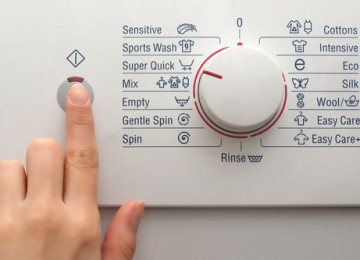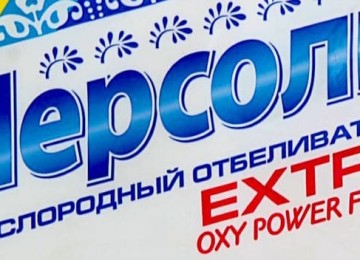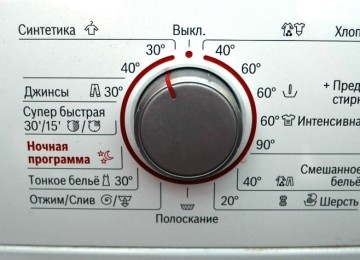The modern rhythm of life dictates its own rules. Even such an everyday aspect as laundry care requires special attention. Fabric softener becomes an integral element, providing not only a pleasant aroma and softness of fabrics, but also the durability of clothes. Let's find out what fabric softener is needed for, what it comes in and what it consists of.
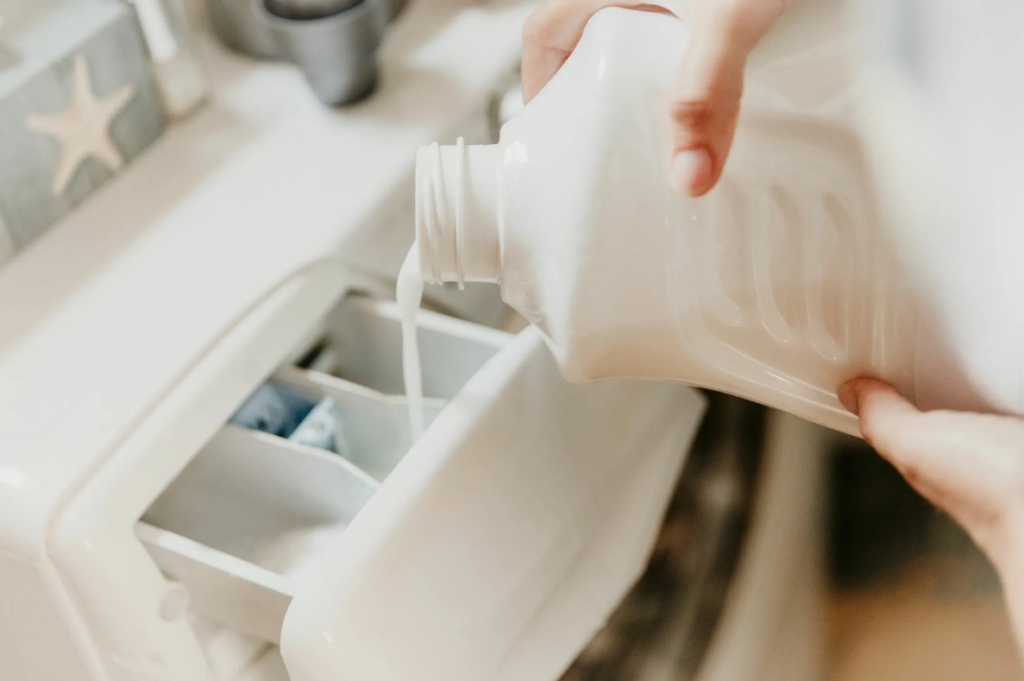
Main functions
Why do you need fabric softener:
- Softness and pleasant aroma. Washing conditioner makes fabrics soft and soft, making them pleasant to the touch and to wear. This is especially important for underwear that comes into contact with sensitive skin (underwear and pajamas). In addition, many compositions have pleasant aromas that give clothes freshness and comfort.
- Fabric protection. Fabric softener reduces friction between fabric fibers, which reduces wear and tear and protects against color fading. This is especially true for fabrics that receive heavy use, such as casual clothing and bedding.
- Antistatic properties. Static electricity can cause discomfort when putting on clothing. The product reduces static electricity, making the process of putting on and wearing clothes more comfortable.
- Easy to iron.Fabrics treated with conditioner have increased smoothness, which simplifies the ironing process. This not only saves you time, but also reduces wear and tear on fabrics caused by friction during ironing.
- Fighting bacteria and odors. Some compounds have disinfectant properties, destroy bacteria and eliminate unpleasant odors. This is especially important in the case of sportswear or baby clothes.
- Saving time and resources. Using fabric softener reduces the time required to care for clothes and increases their service life. This is important for those who value their time and strive to maintain the quality of their clothes.
- Fabric softener is not just an additional accessory in the arsenal of clothes care products. This is an integral element that ensures comfort, durability and a pleasant appearance of linen and things.
How to use
Proper use of fabric softener is key to achieving maximum results.
Step-by-step instructions on how to properly use fabric softener:
- Selecting an air conditioner. Before use, make sure to select a product suitable for your needs and fabric types. Some conditioners are designed for certain types of fabrics or have specialized properties, such as anti-allergenic.
- Reading instructions. Read the instructions on the package carefully. They usually provide guidelines for the amount of conditioner to use, the temperature of the water, and other important details.
- Using the correct amount. Don't overdo the amount of conditioner. Excess can cause fabrics to become sticky and lose their breathability. Usually the packaging indicates the optimal amount for washing a certain amount of laundry.
- Adding conditioner to the rinse compartment. Usually the liquid is added to the special rinse compartment of your washing machine. Make sure to add conditioner to this compartment and not to the main laundry detergent compartment.
- Selecting a washing mode. If your washing machine has the ability to add softener at a certain point in the cycle, use this feature. Otherwise, add by hand at the appropriate wash stage.
- Regular use. Use conditioner regularly, with every wash, to ensure a permanent effect of softness and freshness.
- Follow fabric care guidelines. Make sure the conditioner you choose meets the care recommendations for your specific fabric. For example, some formulations are designed specifically for cotton or synthetic fabrics.
- Do not overload the washing machine. Follow the recommendations for loading laundry. An overloaded washing machine may not be able to distribute the conditioner evenly, which can negatively impact its effectiveness.
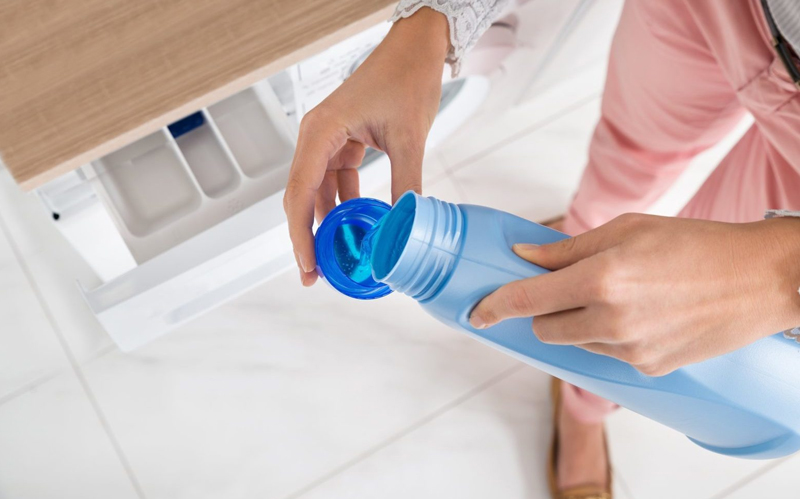
Composition and properties
The composition of fabric softener may vary slightly depending on the manufacturer and brand of the product.
However, the common components that make it effective include:
- Cationic Surfactants (surfactants). These substances are the basis of the conditioner and are responsible for its cleaning and conditioning properties. Cationic surfactants create a positive charge on the surface of fabrics, which helps reduce static electricity and makes fabrics soft to the touch.
- Antistatic and antimicrobial components. Some formulations contain antistatic components that prevent the accumulation of static charge in tissues.Antimicrobial components can be used to combat bacteria and odors.
- Fragrances. They are added to give the laundry a pleasant smell after washing. These can be floral, fruity or other aromas, depending on the preferences of the manufacturer and the consumer.
- Soft substances. To achieve maximum softness of fabrics, various soft components are added, such as silicones or capsules that coat the fibers of the fabrics and give them smoothness.
- Wetting agents. These substances help retain moisture in the fabrics, preventing them from drying out. This is especially important for fabrics that are usually subject to a lot of wear, such as sportswear.
Properties of fabric conditioner:
- Softness and pleasant aroma. The conditioner provides softness of fabrics, making them pleasant to the touch, and gives a pleasant aroma to the laundry.
- Reduction of static electricity. Cationic surfactants reduce static electricity, making the process of putting on and wearing clothes more comfortable.
- Protection of fabrics from wear. Antistatics and softeners reduce friction between fabric fibers, which in turn prevents wear and color loss.
- Fight bacteria and odors. Antimicrobial components help fight bacteria and prevent unpleasant odors.
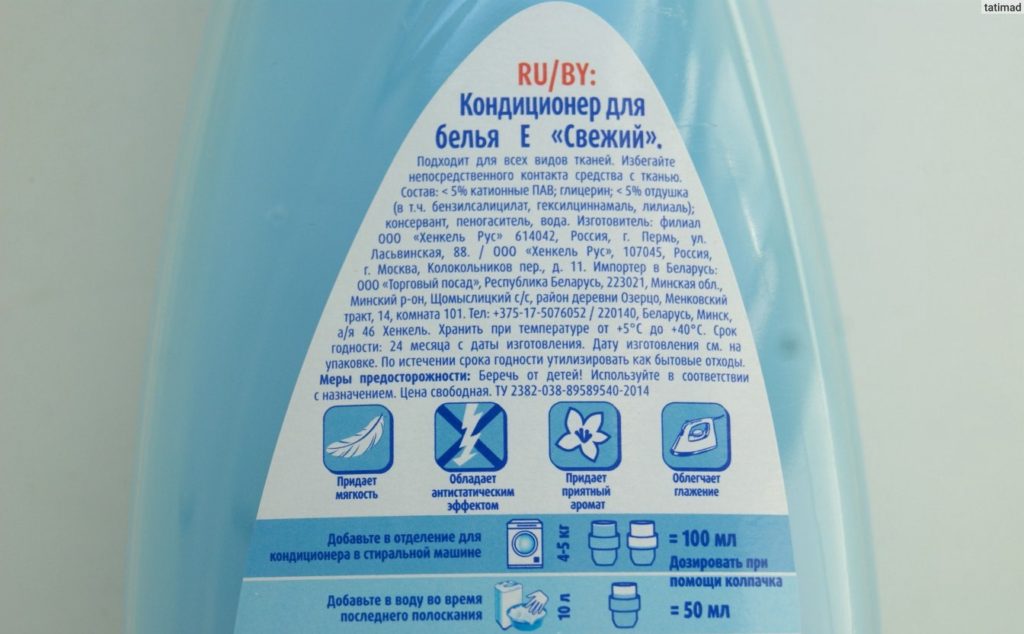
Types
There are several types of fabric conditioners, each designed for specific needs and types of fabric:
- Universal. Suitable for most types of fabric. Provide softness, fresh aroma and protection from static electricity.
- For sensitive skin. Specially designed for linen that comes into contact with sensitive skin. Often hypoallergenic, without aggressive fragrances and components.
- For sportswear.Contains antimicrobial properties to prevent odors and ensure freshness. They also help maintain the shape and softness of fabrics.
- Eco-friendly. Created with the environment in mind, they are often biodegradable and free of harsh chemicals.
- Concentrated. They have a higher concentration of active substances, which allows you to use less product with each wash.
- Antistatic. Specially designed to combat static electricity, making clothing more comfortable to wear.
- With smell. They have a variety of aromatic additives, giving you the opportunity to choose a pleasant scent for your laundry.
Which to choose
Choosing the right formulation depends on what you need the fabric softener for in your home. For general use on a variety of fabrics, it is recommended to choose universal formulations that provide softness, fresh scent and static protection.
If you have sensitive skin, you may want to consider conditioners for sensitive skin, which are often hypoallergenic and free of harsh fragrances. If it is necessary to combat odors and provide antimicrobial protection for sportswear, specialized formulations are suitable.
You need to ensure that the conditioner you choose suits your specific needs and the care guidelines for your wardrobe.
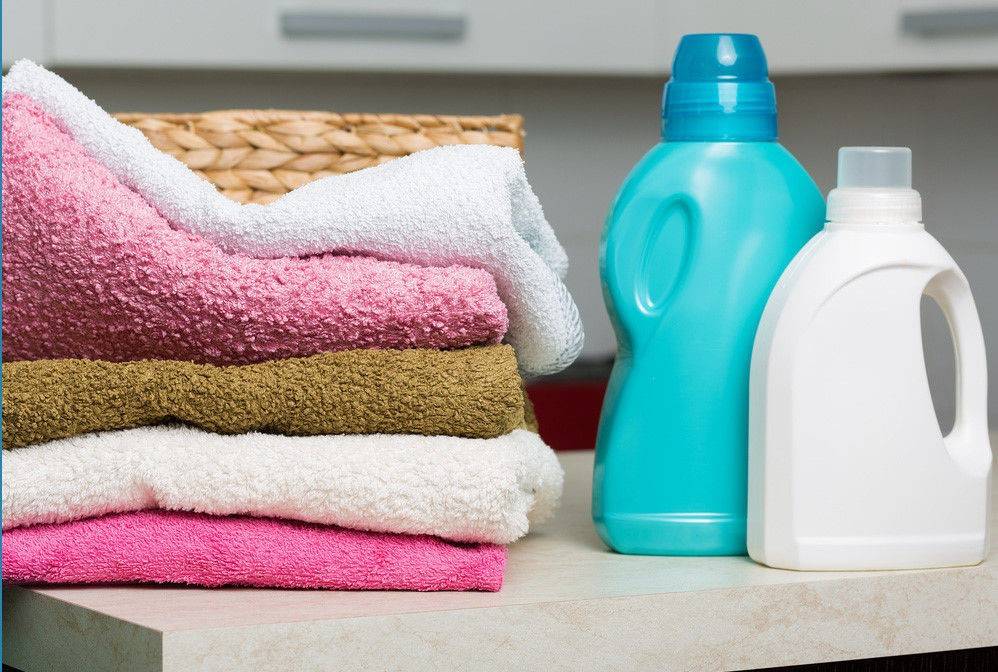
When to add conditioner during washing
The conditioner is added at the last stage of the wash cycle, during the rinsing phase. This ensures maximum absorption of the active ingredients by the tissues, giving them softness, fresh aroma and other beneficial properties. Most washing machines have a softener compartment and should be used according to the instructions on the product packaging.If your washing machine has automatic air conditioner, make sure this feature is turned on.
Conditioner is usually added in small quantities and the dosage recommendations on the package should be strictly followed. This helps avoid overuse of the product and ensures optimal results.
Conclusion
When choosing a conditioner, you should consider not only its basic functions, such as softness and fresh scent, but also its specialized properties that suit the types of fabrics and needs of your clothes. Formulations for sensitive skin, sportswear or eco-neutral options can be key to optimizing the care of certain types of clothing.
It is important to remember that proper use of the product is not only about adding it to a certain compartment of the washing machine, but also about following the dosage recommendations and choosing the appropriate option.







